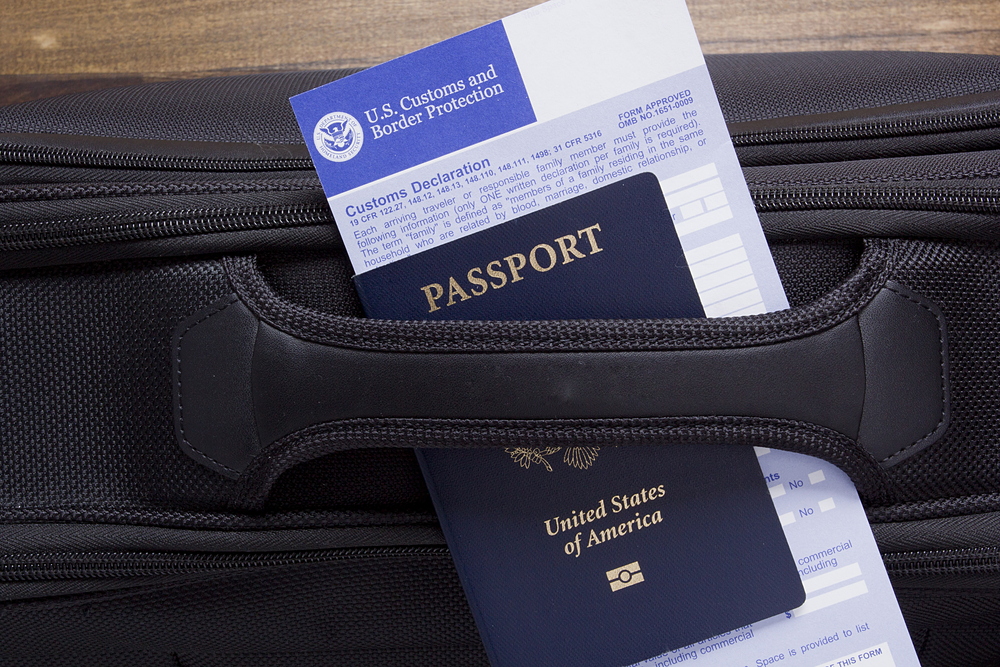With summer just around the corner, international travel is once again top of mind for millions of Americans traveling abroad and foreigners visiting the U.S. After several years of steady growth following the pandemic,1 projections for international travel in 2025 are showing mixed signals. While some industry analysts forecast continued momentum,2 others point to new trade and immigration policies, higher costs, and economic uncertainty as potential headwinds3 for the travel sector.
As travelers navigate these changes, one aspect of international travel remains a persistent source of frustration and inconvenience: clearing immigration and customs upon entering or reentering the United States. These checkpoints — often the last hurdle before reaching a final destination — can involve significant delays, particularly during peak travel times.
This analysis by Upgraded Points, a website dedicated to teaching travelers about points and miles, identifies which U.S. airports tend to have the longest customs wait times during the summer travel season, based on recent data from U.S. Customs and Border Protection.
Average Immigration Wait Times During Summer
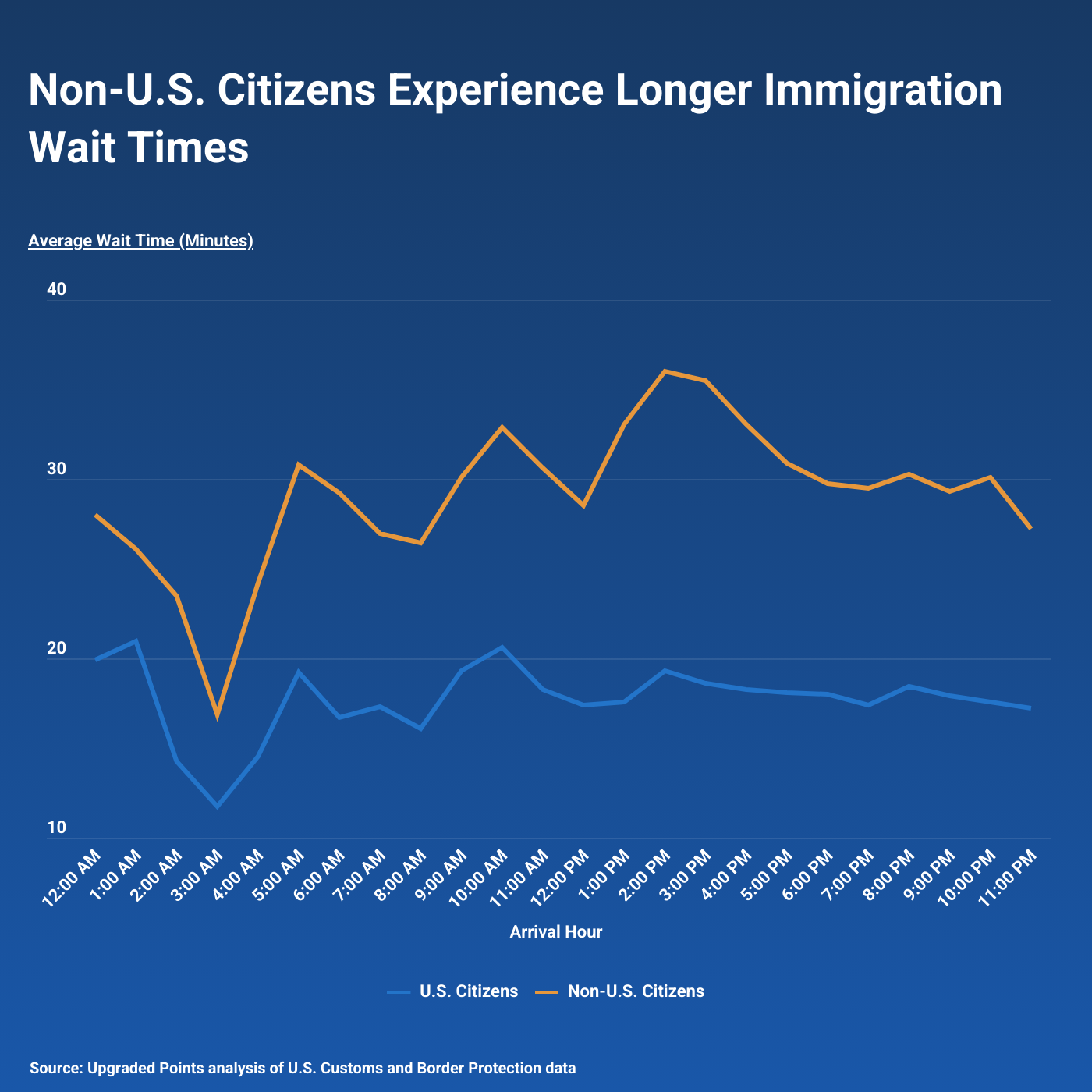
While no international travel experience is guaranteed to be smooth, average immigration wait times at major U.S. airports during the summer are generally not too bad — particularly for U.S. citizens. According to U.S. Customs and Border Protection data, over 42% of all travelers waited less than 15 minutes during the summer of 2024. By contrast, only 6.3% experienced wait times exceeding an hour.
However, non-U.S. citizens consistently face longer delays at the border. Across all arrival times, non-citizens wait significantly more than their U.S. counterparts. For example, during the busiest midafternoon hours, average wait times for non-citizens peak at 36.0 minutes (2 p.m.) compared to 19.3 minutes for U.S. citizens. Wait times for non-citizens are typically 30 minutes or longer for the majority of the day, while those for citizens are usually less than 20 minutes.
For the bulk of travelers, those arriving from 10 a.m. to 3 p.m. can expect to experience the longest waits.
The Worst Airports for Summer International Travel Arrivals
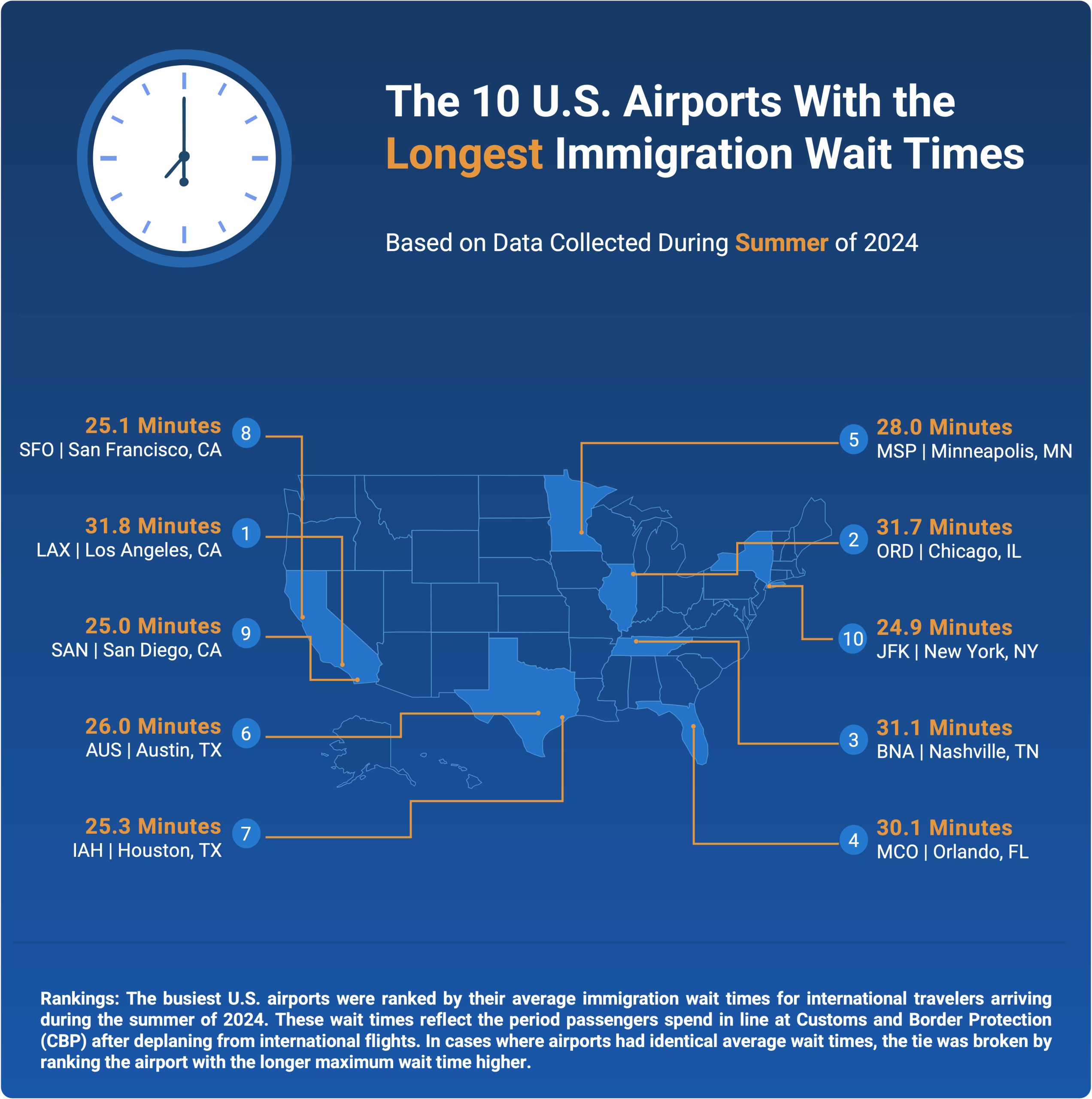
When it comes to long immigration lines, the airport you arrive at matters far more than your travel time. While arriving during off-peak hours can shave a few minutes off your wait, the choice of airport is the most important factor in determining how long it takes to clear immigration and customs.
Topping the list of worst airports for international summer travel is Los Angeles International Airport (LAX), where travelers wait an average of 31.8 minutes before reaching a CBP officer. Non-U.S. citizens experience delays averaging 43.7 minutes compared to 22.3 minutes for citizens. Only 27.6% of international travelers at LAX wait less than 15 minutes, and 12.8% face waits exceeding an hour — the second-highest share in the dataset.
Close behind is Chicago O’Hare International Airport (ORD), with an average wait time of 31.7 minutes. U.S. citizens wait 27.3 minutes on average, while non-citizens wait 40.3 minutes. ORD also had the highest share of travelers waiting more than an hour at 13.6%, indicating frequent congestion during peak periods.
Rounding out the top 3 is Nashville International Airport (BNA). Despite its relatively low passenger volume, immigration delays average 31.1 minutes across all travelers — 28.6 minutes for U.S. citizens and 38.1 minutes for non-citizens. Only 20.2% of travelers face lines that take 15 minutes or less, making BNA one of the least efficient entry points relative to its size.
These findings underscore a key point: there isn’t a strong correlation between an airport’s international travel volume and its immigration wait times. While major hubs like LAX and ORD experience congestion consistent with their size, airports like BNA show how smaller facilities can still struggle to get passengers processed efficiently.
The Best Airports for Summer International Travel Arrivals
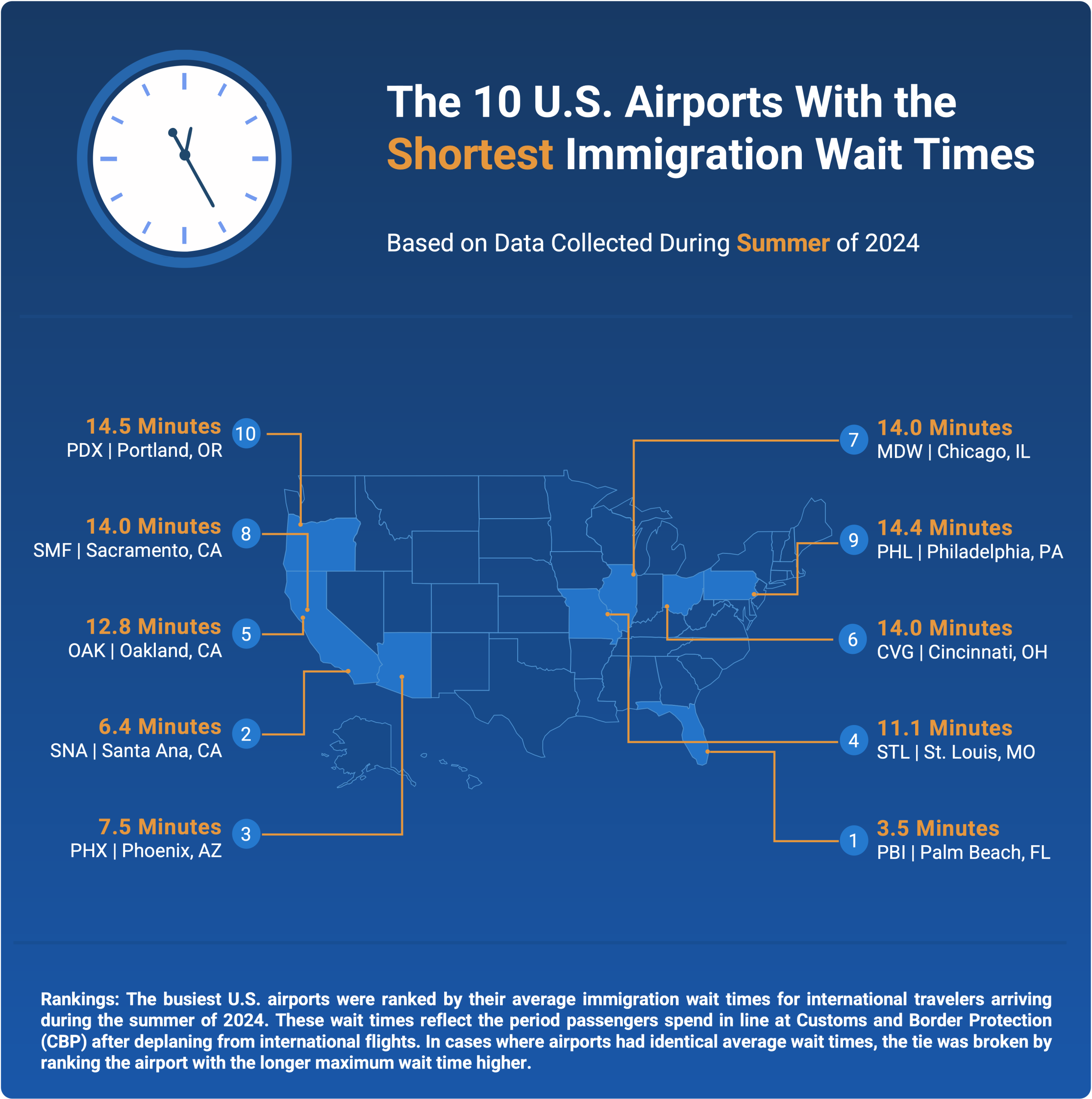
While several low-volume airports have surprisingly long immigration delays, the airports with the shortest wait times tend to be on the smaller side — and that may be their advantage. With fewer international arrivals to process, these facilities avoid the bottlenecks seen at larger hubs, allowing for faster processing.
Palm Beach International Airport (PBI) in Florida ranks as the best-performing international entry point. Travelers at PBI spend an average of just 3.5 minutes waiting in line. The vast majority (92.4%) waited less than 15 minutes, and almost no one waited longer than an hour (0.1%). Wait times are also consistent across traveler types, with U.S. citizens averaging 3.4 minutes and non-citizens just 4.1 minutes.
Also performing well was John Wayne Airport (SNA) in Orange County, California. SNA reports an average summer wait time of 6.4 minutes, with over 93.7% of travelers waiting less than 15 minutes and practically no one waiting more than an hour. Non-U.S. citizens see only a slight increase in wait time compared to citizens (7.0 vs. 6.4 minutes) at John Wayne.
Phoenix Sky Harbor International (PHX) stands out for its strong performance despite handling over 260,000 summer international arrivals in 2024. The average immigration wait time at PHX is 7.5 minutes — 6.5 minutes for U.S. citizens and 11.6 minutes for non-citizens. Nearly 81% of passengers wait in line for less than 15 minutes, and only 0.2% experience a wait time longer than an hour.
These results suggest that, while airport size doesn’t always predict performance, the shortest wait times are typically found at smaller hubs.
For a complete breakdown of the best and worst U.S. airports for international travel during the summer season, see the original report on Upgraded Points: The Worst U.S. Airports for International Travel This Summer.
How To Skip the Lines
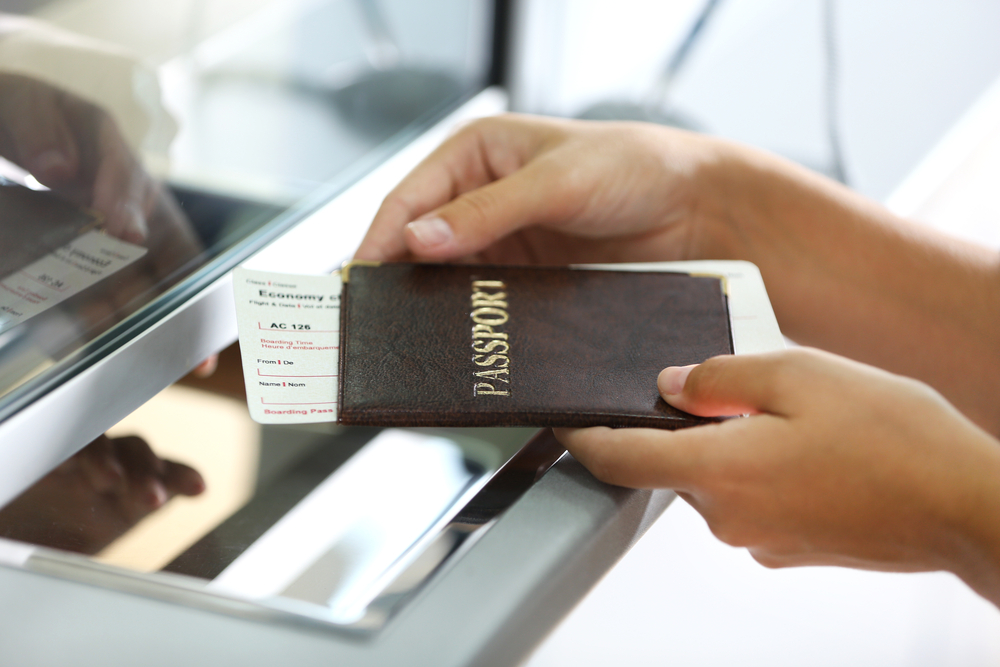
Image Credit: Africa Studio / Shutterstock
Frequent international travelers can benefit from enrolling in Global Entry, a Trusted Traveler Program offered by U.S. Customs and Border Protection that speeds up the immigration process for preapproved, low-risk travelers. Global Entry travelers use dedicated kiosks upon arrival in the U.S., typically bypassing the standard CBP lines altogether. The program costs $120 to apply, lasts for 5 years, and includes TSA PreCheck, making it a valuable option for routine international flyers.
Fortunately, many premium travel credit cards reimburse the Global Entry application fee as a perk. For eligible travelers, this can mean a faster, smoother arrival process — often shaving a meaningful chunk of time off international trips.
Methodology
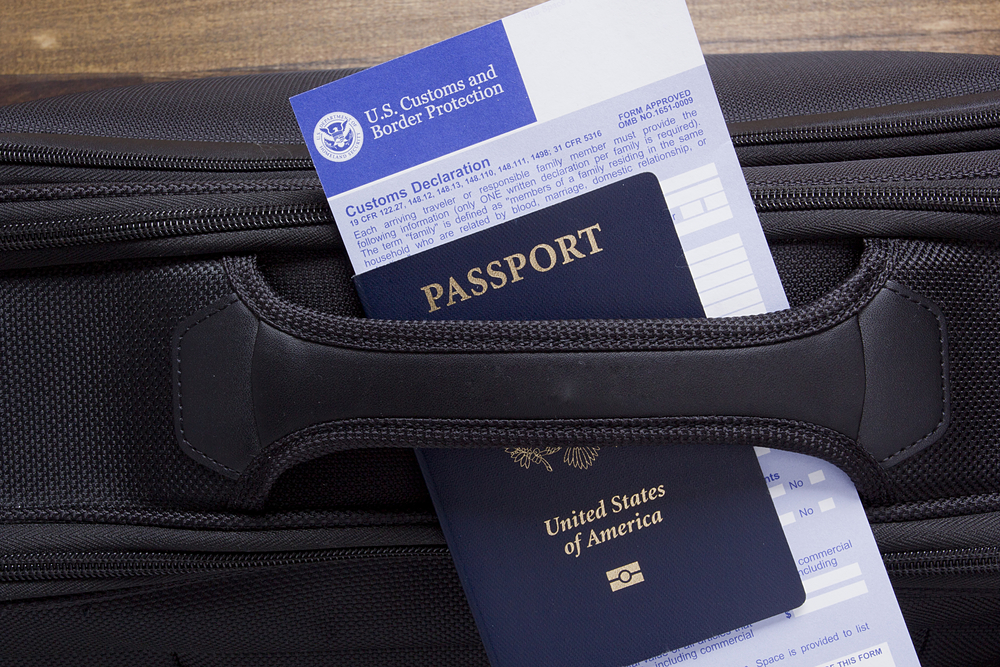
Image Credit: Constantine Pankin / Shutterstock
The data used in this study is from the U.S. Customs and Border Protection’s CBP Airport Wait Times dataset.
To determine the worst airports for international travel arrivals during the summer months, researchers at Upgraded Points calculated average wait times for travelers passing through Passport Control during the 2024 summer travel season (June 1 to August 31, 2024). All major U.S. international airports tracked by the CBP with sufficient data were included. Researchers also calculated the average max wait time for all travelers, which is a total traveler-weighted average of the hourly maximum wait times reported for each airport over the study period.
Average summer wait times for U.S. citizens and non-U.S. citizens, the percentage of all travelers that passed through Passport Control in under 15 minutes, and the percentage of all travelers that passed through Passport Control in greater than 60 minutes during the same time period were also included.
For complete results, see The Worst U.S. Airports for International Travel This Summer on Upgraded Points.




